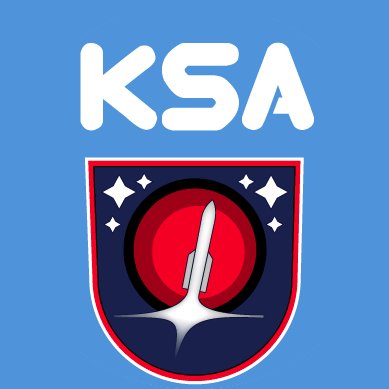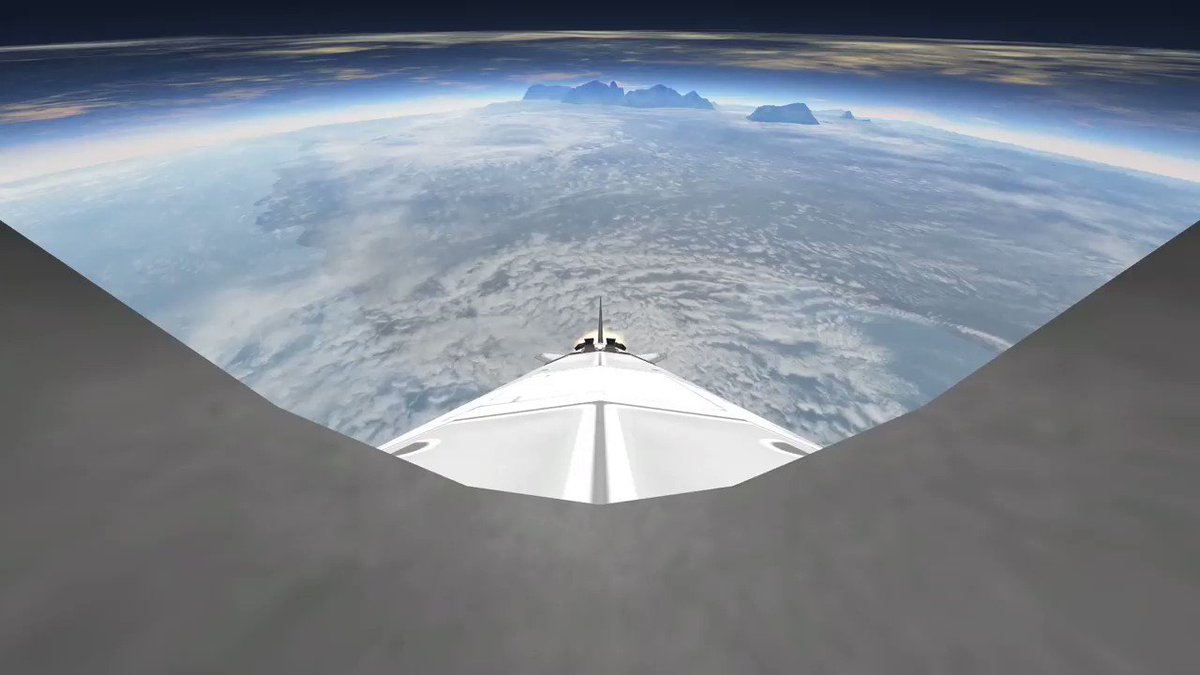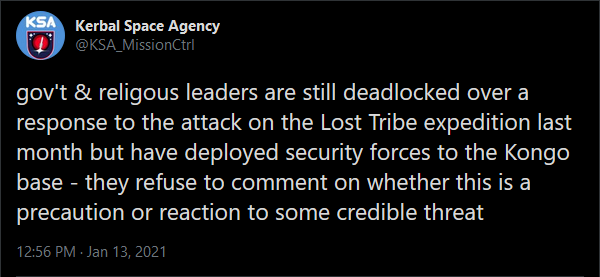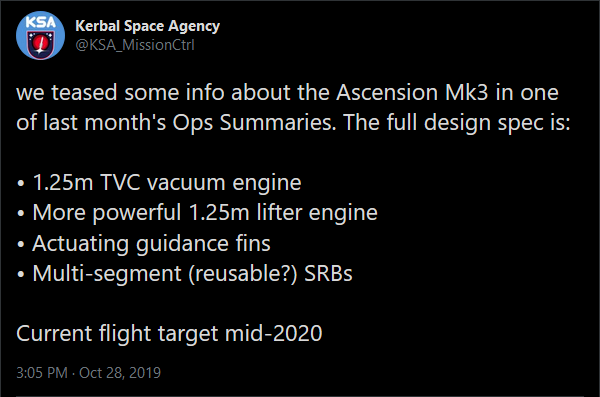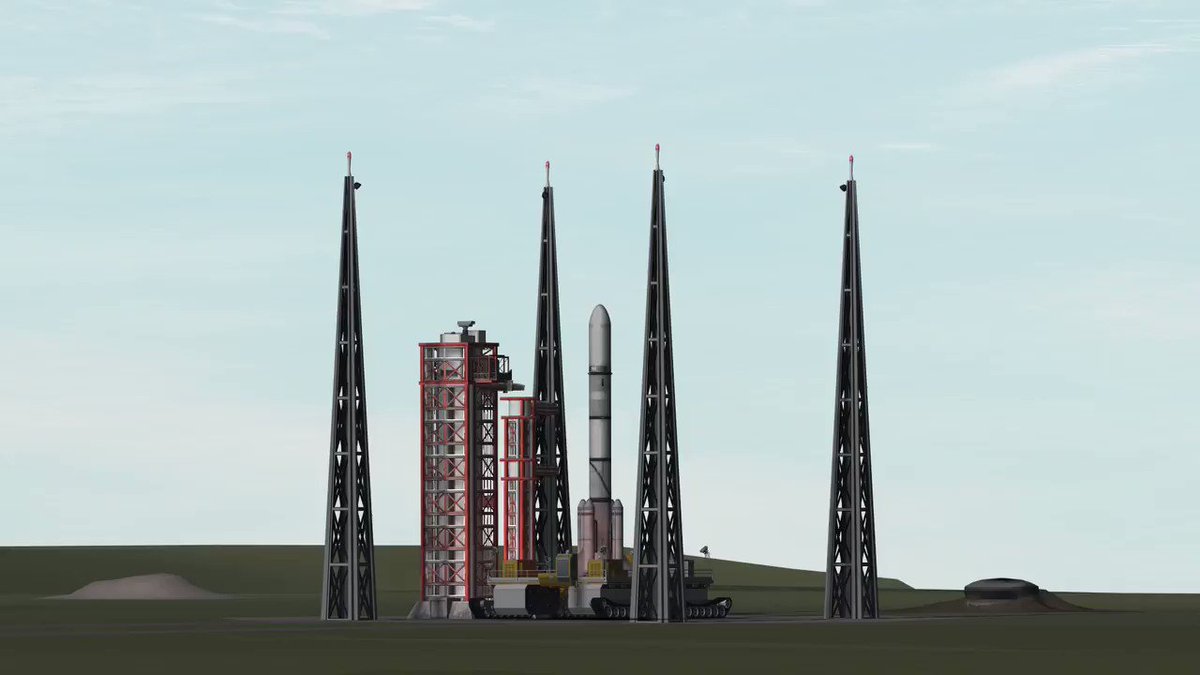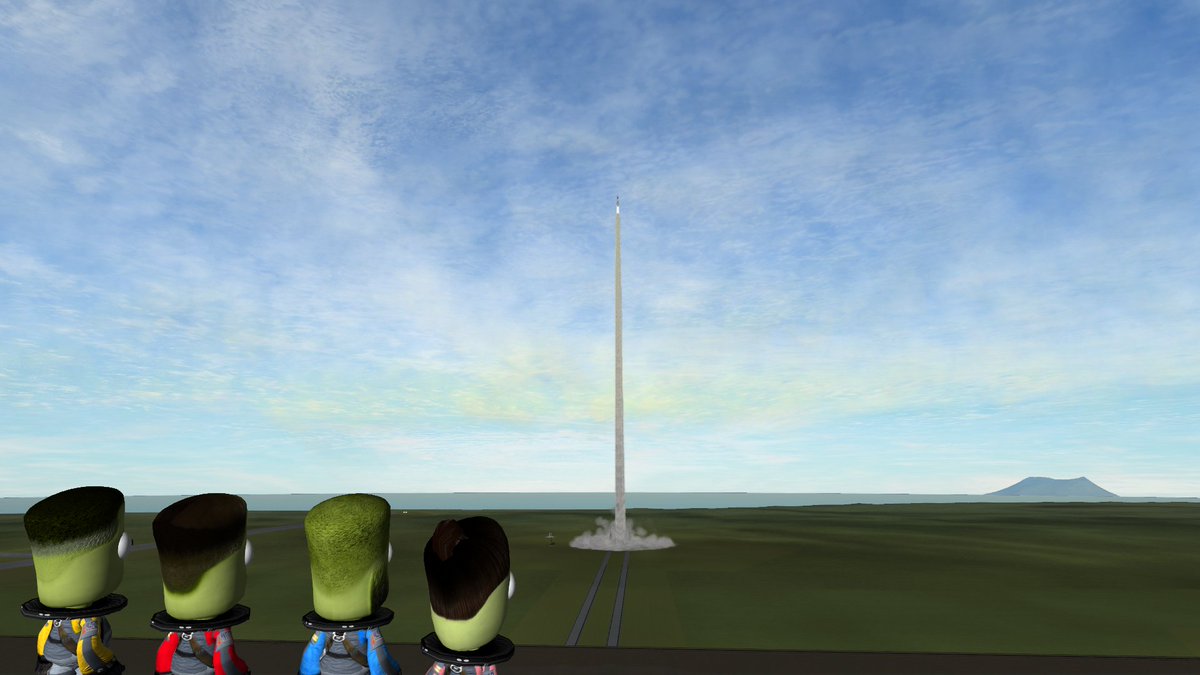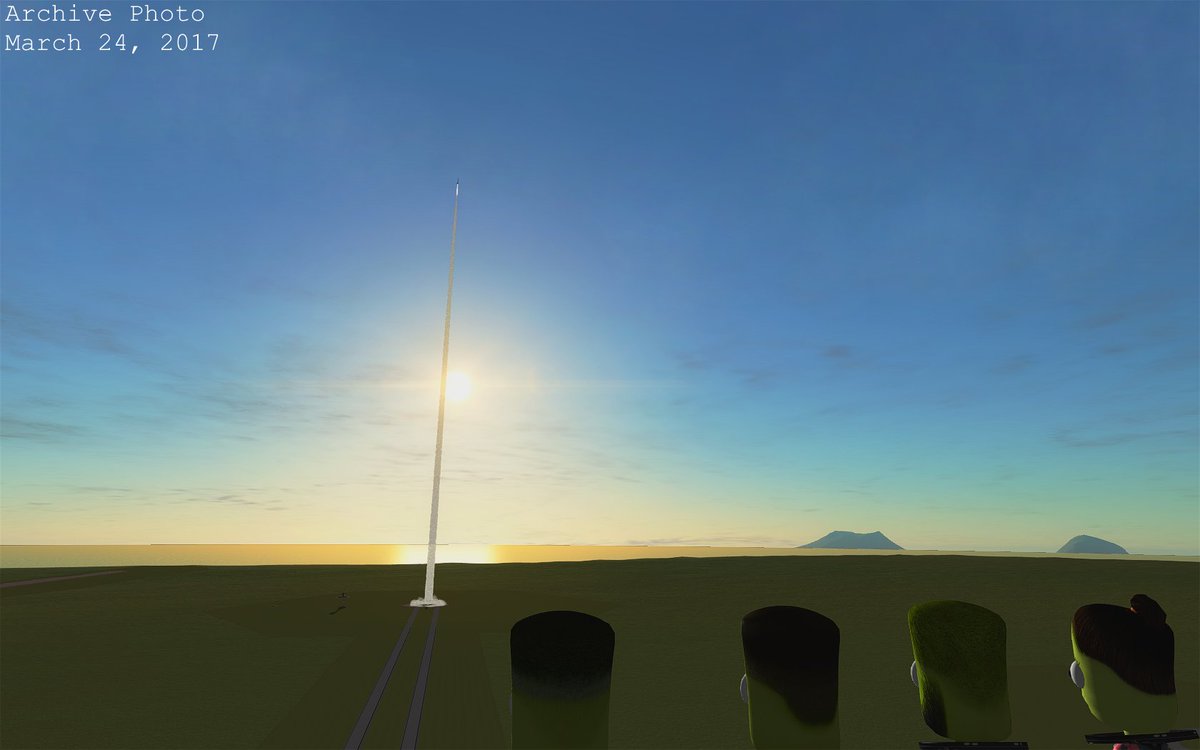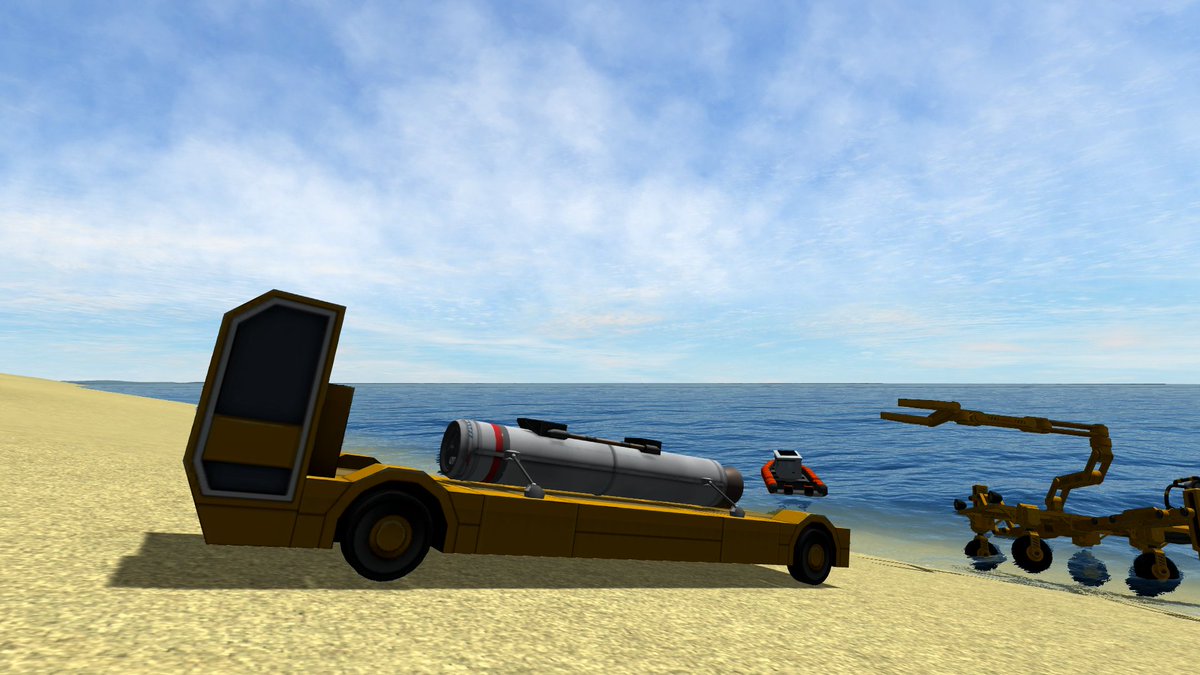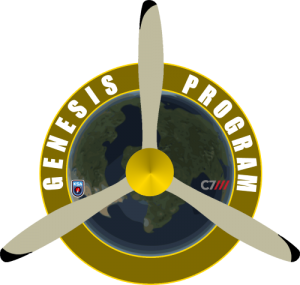 C7 Aerospace Division has completed debriefing Captain Jebediah, who was in command of the Civvie Production model’s maiden flight earlier today. The flight took the Civvie up to maximum cruising altitude while checking to ensure all systems behaved properly and the aircraft handled as simulations predicted. We are happy to report that with the exception of one minor anomaly the Civvie has performed as designed. Having also test piloted the original prototype aircraft Jeb was able to compare and contrast very effectively, saying that this new model brought about all he and his fellow test pilot Commander Valentina could have ever wanted.
C7 Aerospace Division has completed debriefing Captain Jebediah, who was in command of the Civvie Production model’s maiden flight earlier today. The flight took the Civvie up to maximum cruising altitude while checking to ensure all systems behaved properly and the aircraft handled as simulations predicted. We are happy to report that with the exception of one minor anomaly the Civvie has performed as designed. Having also test piloted the original prototype aircraft Jeb was able to compare and contrast very effectively, saying that this new model brought about all he and his fellow test pilot Commander Valentina could have ever wanted.
We will be servicing the Civvie for the next day or two in order to make some changes to the control cabling that will hopefully fix the issue discovered by Jeb on his test flight. The Civvie will then undergo one more final flight trial which, if also successful, will certify the aircraft ready to complete science missions and any other tasks that may benefit from its capabilities. While command rotation would normally pass to Val for this next flight, Jeb will once again pilot so he can directly compare the performance.
Weather earlier today was partly cloudy with light and variable winds coming out of the northwest. After receiving his taxi clearance Jeb took the Civvie out to turf Runway 27 for takeoff. Clearance was granted during his taxi after a final weather check and once lined up with the runway he accelerated to full throttle, starting his takeoff roll at 13:41:34 UTC. 22s and 359m later @ 40m/s his tail wheel came off the ground as lift under the wings dropped the nose. At 13:42:03 UTC and after a roll of 705m the Civvie lifted off her main wheels while traveling 52m/s and continued its positive rate of climb while Jeb cleaned up the wings by retracting both flaps. He continued to climb at runway heading under full throttle, noting a rate of 7-9m/s which is more than the 3-5m/s attained by the much heavier Civvie Prototype. At 13:46:05 UTC he was passing through 2km for 4.5km and was directed to turn to a heading of 225° in order to stay south of the mountains and any potentially turbulent air due to downdrafts.
During this initial climb phase of the flight Jeb monitored his engine readouts to ensure the performance was within tolerances as the air grew progressively thinner and thinner the higher he went. He also left the stick neutral to see how well the Civvie climbed naturally and maintained a level attitude while doing so. Although he was required to make minute corrections via the ailerons to stay on heading, the Civvie mostly wanted to just fly straight and climb on its own, as designed.
By 13:52:36 UTC the Civvie had climbed to 4km and Flight instructed Jeb back on a heading of 270° to stay over land and head for the Western Desert. He also began to prepare for level flight at the Civvie’s service ceiling of 4.5km, which puts the outside air pressure at just 50.2 kiloPascals (kPa). A kerbal cannot survive for long at kPa levels lower than 50, so 4.5km is as high as the Civvie can go with its unpressurized cabin if the pilot does not have a pressure suit. Even flying for long at this height could eventually prove deadly, and besides the lack of air the temperature is only around 23°F. Still, for a full performance test the Civvie would have to fly up here for a lengthy amount of time and Jeb had been medically cleared for the duration as well as bringing along some heat packs for his mittens and an emergency oxygen supply.
In order to level off, the new trim tabs would be used. However in practice this wasn’t as simple as we had hoped. Before eventually achieving level flight at 4.5km (+/-100m) Jeb climbed as high as 4.8km before finally reducing throttle to arrest his ascent and trim his way back down to 4.5km, which he attained with 66% thrust. Once leveled off it was back to monitoring the engine readouts in this rarefied atmosphere and confirm that all was remaining within specifications. The aircraft was starting to roll gradually once the elevators had been trimmed so Jeb applied a light touch of aileron to straighten her out, but the movement of the control cables via the stick caused the trim tabs to align with the control surfaces until the stick was released, when they settled back into their last-set positions. This caused a lot of oscillation along the pitch axis as the elevator trim was fairly far down towards maximum already! So instead of using the stick to fly Jeb played with the aileron trim to control the bank of the airplane, which seemed to work okay but was fairly touchy.
After several minutes cruising with no further problems and with additional elevator trim still available, at 14:06:35 UTC Jeb was instructed to gradually increase thrust back to 100% while maintaining level flight via trim. This was achieved over the next four minutes and the Civvie reached a record top speed of 110m/s (mach 0.335) while under level flight. Jeb reported that he was about to go “feet wet” over the Western Sea and Flight instructed him to go to neutral trim and turn the plane about to a heading of 90° to begin flying back to KSC, as well as allowing him to descend to 2.5km for warmer, more oxygen-rich air. Jeb spent a total of 20m45s above 4km without a pressure suit or oxygen assistance, which is another record. While turning about he had traveled a record 139.8km from KSC by now with a total distance so far of 151km.
With his experience from 4.5km Jeb had a much easier time keeping ahead of the aircraft and setting the trim for level flight at 2.5km with 66% thrust, cruising at that altitude by 14:20 UTC. At 14:25:28 UTC approximately 63km from KSC, Flight vectored Jeb to a heading of 45° to once again stay over land as he continued to head back home. He was returned to a heading of 90° 4 minutes later to get him set for his entry into the traffic pattern. At 25km out, Flight instructed him to go to neutral trim and begin his final descent to land on dirt Runway 27.
Jeb’s descent was at a rate of 5-10m/s with the throttle pulled all the way back to idle, which kept him from exceeding speeds of 110m/s, which wouldn’t have been dangerous but would have made slowing down during his approach harder. He lowered one notch of flaps as he cleared 1.5km. His downwind leg had him pass abeam of the runway 12km to the south and at 16km from KSC he reached 500m, where he notched flaps to two and began his turn to base leg, working the throttle and stick to maintain his altitude of 500m. He entered base in excess of 70m/s and used his level flight to bleed off speed so he was at 60m/s when he finally turned onto final to line up with the runway 12km distant, notching flaps to full. He continued to descend with his throttle for speed control, aiming to touch down in the range of 40-45m/s. Flaring over the runway, he exerted full pitch up to keep his nose level and landed mostly on his main gear at 42.4m/s. The late strike of the tail wheel bounced the plane forward but thankfully not enough to pitch it over. Still, it was a near thing. He rolled to a stop on the runway at 14:44:30 UTC for a total flight time of 1h02m56s traveling a record distance of 331km.
In his debrief, Jeb suggested that in addition to the control cabling issue that needs obvious sorting, pitch authority be slightly increased and roll authority be slightly decreased. He also would like to see the installation of fuel pumps that could move the fuel to the rear of the plane during landing to assist with keeping the nose up on final approach if the aircraft is still heavy enough.








